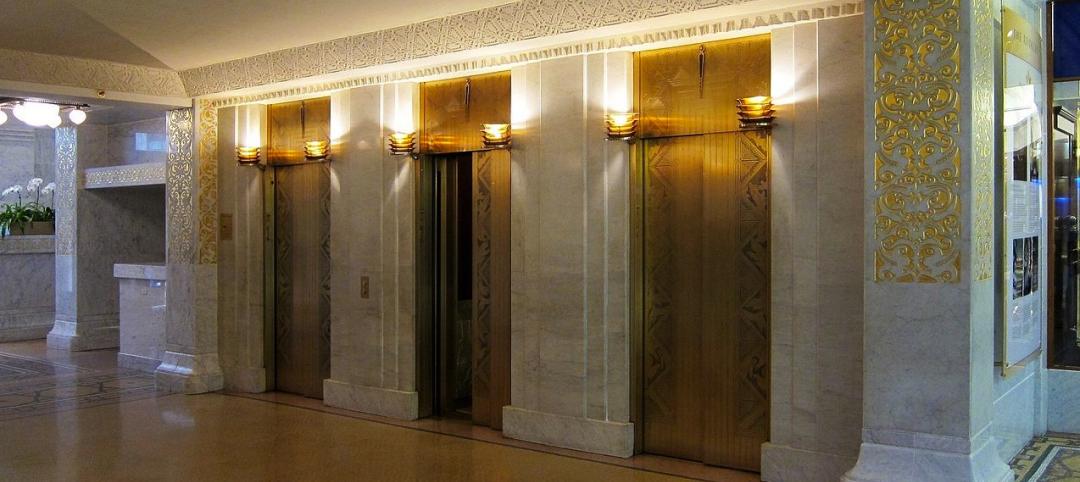Ben Franklin is often attributed as saying only two things are certain in life: death and taxes. While this quote rings true, it can be assumed Franklin didn’t predict some entities would be handed a tax bill of $71 million for property taxes alone, but that is exactly what Manhattan’s GM Building faced in 2016.
According to research conducted by COMMERCIALCafé, the GM Building had the highest property taxes in the country in 2016. Of the top 10 properties with the highest taxes, nine were associated with office buildings, but it is a residential community that takes the second spot on the list. Stuyvesant Town came in behind the General Motors Building, paying $60.5 million for property taxes in 2016.
The Metlife Building, 1345 Avenue of the Americas, and 1221 Avenue of the Americas, all in New York City, round out the top five.
Each property in the top ten resides in New York. In fact, you need to go down the list all the way to number 13 before arriving at a property not in New York, but Illinois. The Illinois entry to the list isn’t what you would expect, either. Not only was the first Illinois building on the list not the Willis Tower, but it wasn’t even a building in Chicago.
The first building on the list not in New York is the Exelon – Byron Nuclear Generating Station in Byron, Ill. The nuclear station paid $36.5 million in property taxes in 2016. Chicago’s Willis Tower doesn’t make an appearance until number 28 on the list, with $28.4 million paid in property taxes.
Minnesota’s Mall of America makes the list as the highest retail property at number 25 with $30 million in 2016 property taxes. Woodfield Mall, in Schaumburg, Ill., is the next closest retail property on the list at number 40 with $24 million paid in 2016.
The New York Marriott Marquis Hotel is the highest hotel on the list, at number 11, with a total of $36.6 million paid in 2016. The next closest was the New York Hilton Midtown Manhattan Hotel at number 39, with a total of $24.3 million.
Some buildings you may expect to see on the list, such as New York’s Chrysler Building or One World Trade Center, are nowhere to be found. This is because these structures, and other landmark buildings (Woolworth Building) are tax exempt. The Port Authority of New York & New Jersey, for example, owns One World Trade Center, so it doesn’t pay property taxes.
To view the entire Top 100 list, click here.
Related Stories
Contractors | Sep 19, 2017
Commercial Construction Index finds high optimism in U.S. commercial construction industry
Hurricane recovery efforts expected to heighten concerns about labor scarcities in the south, where two-thirds of contractors already face worker shortages.
Multifamily Housing | Sep 15, 2017
Hurricane Harvey damaged fewer apartments in greater Houston than estimated
As of Sept. 14, 166 properties reported damage to 8,956 units, about 1.4% of the total supply of apartments, according to ApartmentData.com.
High-rise Construction | Sep 8, 2017
CTBUH determines fastest elevators and longest runs in the world in new TBIN Study
When it comes to the tallest skyscrapers in the world, the vertical commute in the building becomes just as important as the horizontal commute through the city.
Multifamily Housing | Sep 5, 2017
Free WiFi, meeting rooms most popular business services amenities in multifamily developments
Complimentary, building-wide WiFi is more or less a given for marketing purposes in the multifamily arena.
Market Data | Sep 5, 2017
Nonresidential construction declines again, public and private sector down in July
Weakness in spending was widespread.
Market Data | Aug 29, 2017
Hidden opportunities emerge from construction industry challenges
JLL’s latest construction report shows stability ahead with tech and innovation leading the way.
Architects | Aug 21, 2017
AIA: Architectural salaries exceed gains in the broader economy
AIA’s latest compensation report finds average compensation for staff positions up 2.8% from early 2015.
Market Data | Aug 17, 2017
Marcum Commercial Construction Index reports second quarter spending increase in commercial and office construction
Spending in all 12 of the remaining nonresidential construction subsectors retreated on both an annualized and monthly basis.
Industry Research | Aug 11, 2017
NCARB releases latest data on architectural education, licensure, and diversity
On average, becoming an architect takes 12.5 years—from the time a student enrolls in school to the moment they receive a license.
Market Data | Aug 4, 2017
U.S. grand total construction starts growth projection revised slightly downward
ConstructConnect’s quarterly report shows courthouses and sports stadiums to end 2017 with a flourish.
















